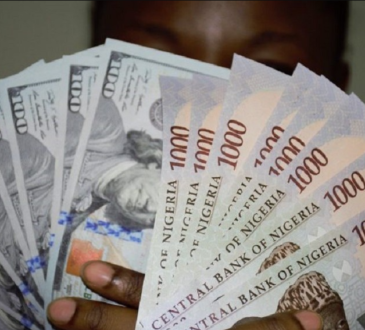3. Italy
With 2,451.84 tonnes of gold reserves, Italy ranks third globally, constituting around 68.33% of its foreign reserves.
The Italian central bank manages these reserves, which are stored primarily in Rome and other secure locations across the country.
Italy’s gold holdings are significant not only for their value but also for their historical importance; they symbolise the nation’s economic resilience through various financial challenges over the years.
The Italian government views gold as an essential asset that provides security against economic instability and inflationary pressures.
Furthermore, Italy’s robust gold reserves bolster its position within the Eurozone, enhancing its financial stability and international standing.
4. France
France comes in fourth place with 2,436.88 tonnes of gold reserves, making up approximately 69.99% of its total foreign reserves.
The Banque de France manages these holdings, which are stored securely in Paris and other locations.
France has maintained its gold reserves as part of a broader strategy to ensure financial stability and protect against economic downturns.
Historically, French policymakers have recognised gold’s role as a safe-haven asset during periods of uncertainty.
The substantial amount of gold not only supports France’s monetary policy but also enhances its influence within the European Union and on the global stage.
5. Russian Federation
Ranking fifth is the Russian Federation, with 2,332.74 tonnes of gold reserves, which accounts for about 29.47% of its total foreign reserves.
Russia has aggressively increased its gold holdings over recent years as part of a strategy to diversify away from reliance on the U.S. dollar amid geopolitical tensions and sanctions from Western nations.
The Central Bank of Russia has been one of the largest buyers of gold globally since 2015, viewing it as a critical asset for national security and economic stability.
This accumulation reflects Russia’s commitment to strengthening its financial independence and resilience against external economic shocks.
6. China
In sixth place is China, holding 2,191.53 tonnes of gold reserves, which constitutes about 4.91% of its total foreign reserves.
China’s central bank has gradually increased its gold holdings over the past decade as part of a broader strategy to diversify its assets and reduce dependence on foreign currencies like the U.S. dollar.
Gold is viewed as an essential component in enhancing China’s monetary policy flexibility and supporting its growing economy amidst global uncertainties.
The Chinese government actively promotes domestic gold consumption while strategically accumulating international reserves to bolster national security and economic resilience.
7. Japan
With 845.97 tonnes, Japan ranks seventh among countries with the highest gold reserves, making up about 5% of its total foreign reserves.
Japan’s central bank holds these reserves primarily as a hedge against inflation and currency fluctuations amid aggressive monetary policies like quantitative easing implemented over recent years.
Although Japan does not heavily rely on gold compared to other nations, it recognises the importance of maintaining some level of precious metal holdings to bolster investor confidence during periods of economic volatility.
For You| Top 10 Most Populated Nations of the World (2024)
8. India
India ranks eighth with 800.78 tonnes of gold reserves, constituting approximately 9% of its foreign exchange reserves.
Gold holds immense cultural significance in India; it is considered a symbol of wealth and status while being integral to various rituals and celebrations throughout the year.
The Reserve Bank of India actively manages these holdings and regularly increases them to strengthen financial stability amid rising global uncertainties and inflationary pressures.
India’s growing affluence further fuels the demand for gold domestically, making it one of the largest consumers globally while reinforcing the importance of these reserves in supporting national economic interests.
9. Netherlands
Finally, the Netherlands, ranked ninth with 612.45 tonnes of gold reserves (about 61% of its total foreign exchange holdings), maintains significant assets primarily stored within national vaults for security purposes.
The Dutch central bank has historically valued these holdings as essential for ensuring financial stability while providing confidence in economic uncertainty or crises globally or within Europe itself.
The Netherlands’ strategic management of its gold reserves reflects a commitment to sound monetary policies that enhance national credibility on international platforms.
10. Turkey
Turkey ranks tenth in the world with 584.93 tonnes of gold reserves as of 2024, marking a significant increase from previous years.
The Turkish Central Bank has emerged as one of the largest buyers of gold among central banks globally, having increased its reserves dramatically from just 114 tonnes in 2017 to its current levels.
Approximately 34% of Turkey’s foreign exchange reserves are now held in gold, underscoring its importance in the national economy.
The country also has substantial untapped gold mining potential, estimated at 6,500 tonnes, which could further bolster its reserves and economic stability.
Conclusion
Gold reserves act as the foundation of a country’s financial stability, providing a tangible asset that can be used to back up its currency. In times of economic uncertainty, gold reserves can help bolster confidence in the country’s monetary system and maintain its value.
As of the World Gold Council Report 2024, the United States stands as the country with the largest gold reserves in the world, holding approximately 8,133.5 tonnes of gold.
Following the U.S., Germany, Italy, and France are among the top countries with significant gold reserves, further solidifying their economic standing on a global scale.

Central banks hold approximately 20% of all mined gold, reflecting its significance in maintaining financial security and liquidity. They typically consist of gold bullion and coins that are officially owned by the state. This includes both physical gold and unallocated gold accounts held with foreign entities.
Throughout history, gold reserves have been viewed as critical national assets, often influencing economic policies and wartime strategies.
Therefore, this article not only highlights the countries with substantial gold holdings but also underscores the importance of gold as a strategic asset in global finance.





